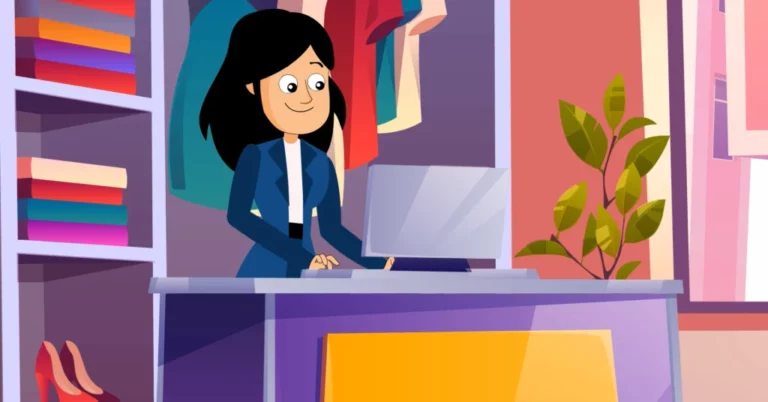Retail Cybersecurity
Retail cyber security is no longer just a technical concern, it’s a critical business priority. In a sector where consumer trust, seamless experiences, and 24/7 availability are non-negotiable, cyber security in the retail industry is essential for protecting customer data, maintaining operations, and upholding brand reputation.
With the rise of e-commerce and digital payments, retailers are handling more sensitive data than ever. Credit card details, personal identifiers, and behavioral data are all attractive targets for cybercriminals. As the retail industry becomes more digital, retail cybersecurity threats are escalating, exposing businesses to data breaches, ransomware attacks, and hardware-based exploits.
Why Cybersecurity is Essential for the Retail Industry?
In today’s fast-evolving digital landscape, the retail industry faces unprecedented cybersecurity challenges. From omnichannel transactions to cloud-based inventory systems and connected in-store devices, retailers are managing complex environments that are increasingly vulnerable to cyber threats. A single breach can compromise sensitive customer data, disrupt operations, and severely damage brand reputation.
Investing in robust cybersecurity frameworks helps protect customer trust, ensure regulatory compliance (such as PCI DSS and GDPR), and prevent financial losses. As retail continues to digitize, proactive cybersecurity measures will determine which companies thrive, and which fall victim to costly attacks.
Retail Cybersecurity Risks
While consumers shop for clothes, homeware, appliances, or stationery, attackers shop for data.
E-commerce spending in the U.S. has surged, with online retail sales increasing by 44% in a single year (Digital Commerce 360, U.S. Commerce Department). To meet customer expectations, retailers collect large volumes of personal and financial information, making them lucrative targets for hackers.
Retailers also use big data analytics to personalize experiences, track behavior, and forecast demand. While this enhances customer satisfaction, it also increases the attack surface. Any breach can compromise thousands, if not millions, of records, resulting in legal consequences, customer loss, and damage to brand equity.

Ransomware in Retail
Consumers have access to countless online stores, but what happens during a cyber lockdown? Ransomware attacks can shut down critical systems, halting operations and crippling businesses. The impact is especially severe during peak shopping periods like Black Friday and Cyber Monday, when even a few hours of downtime can result in significant revenue loss.
In addition to the loss of revenue, the retail industry faces high remediation costs from ransomware attacks, which are estimated to reach nearly $2 million. These retail security threats not only jeopardize financial performance but also threaten the reputation and trust that retailers have worked hard to build. Businesses must take proactive steps to defend against these attacks and minimize the damage they can cause.

Hardware-Based Threats: The Hidden Side of Retail Cybersecurity
Most retailers focus on software-based threats, but hardware attack tools, also known as rogue devices, pose an invisible threat. These small, malicious devices can be plugged into POS systems, network switches, or employee workstations, stealing data or injecting malware while evading detection.
Key hardware-related challenges in the retail environment include:
- High employee turnover, especially seasonal workers with limited oversight or loyalty.
- Physical access vulnerabilities in open retail spaces where attackers can covertly plant rogue devices.
- Lack of visibility at the physical layer, allowing unapproved hardware to operate undetected by traditional security tools like NAC, EPS, or IDS.
A disgruntled employee or malicious insider could walk away with sensitive data on a USB stick, undetected. That’s why modern retail cyber security strategies must include hardware-level protections.
Expanding Attack Surfaces: IoT and Supply Chain Risks
Digital transformation in retail has created more entry points for cyberattacks. With multiple devices per employee and the rise of IoT in stores, the attack surface is wider than ever. These IoT devices are often less secure and offer easy access to the network. Physical stores remain vulnerable too, attackers can discreetly connect malicious hardware at checkout terminals. Additionally, reliance on complex supply chains introduces further risk, as each vendor may become a gateway for cyber threats.
Building a Zero Trust Retail Cybersecurity Strategy
Traditional cybersecurity models trusted everything inside the network perimeter. But today’s threats don’t respect boundaries. That’s why retailers are turning to the Zero Trust security model, which follows the principle: “Never trust, always verify.”
Zero Trust enforces:
- Least privilege access, ensuring employees only access what they need.
- Microsegmentation, limiting the blast radius of any breach.
- Continuous verification, even for internal devices and users.
However, rogue hardware can still bypass these measures if it operates below the software layer. That’s where Zero Trust Hardware Access (ZTHA) comes in, by monitoring and managing physical devices that connect to the network.
Retail Cybersecurity at the Physical Layer
Retail security threats continue to evolve, and traditional cybersecurity solutions often lack visibility into the physical layer, leaving retailers exposed to hardware-based attacks. Sepio’s Asset Risk Management (ARM) platform provides complete physical layer visibility, detecting all connected hardware assets (IT, OT, IoT) by analyzing their true digital fingerprint, rather than relying on device-reported information. This capability ensures effective enforcement of Zero Trust security protocols, strengthening the overall security posture.

Beyond visibility, Sepio’s Rogue Device Mitigation (RDM) technology takes a proactive approach by blocking unauthorized or malicious hardware in real-time, preventing potential hardware-based threats before they can compromise the network. By leveraging Sepio, retailers can maximize the effectiveness of their existing cybersecurity investments while gaining unmatched protection against evolving retail security threats. This proactive protection enhances overall security, ensuring retailers are prepared to defend against both known and emerging cyber risks.
Schedule a Demo Today
Don’t let hidden hardware threats put your retail operations at risk. Discover how Sepio can help you secure your assets and enforce Zero Trust Hardware Access. Schedule a demo today and take the next step toward a stronger, more resilient retail security strategy.






